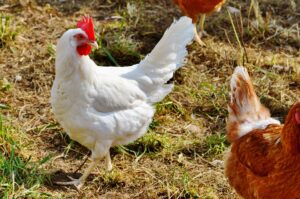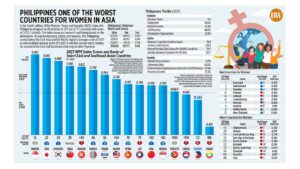Undersized poultry, egg shortage, and the need for an information network to improve Philippine agriculture

The broiler industry is in the black, but Filipino producers are still proceeding cautiously, according to Elias Jose “Bong” M. Inciong, president of the United Broiler Raisers Association (UBRA), a group of small- and medium-scale poultry producers.
Farmgate prices usually collapse after Christmas, given the Filipino pamahiin (superstition) of avoiding poultry consumption during the New Year, Mr. Inciong said.
The superstition is in reference to the Filipino expression “isang kahig, isang tuka,” (hand-to-mouth existence) that describes how chickens eat.
This hasn’t happened this year, yet “this minor miracle is also a cause for concern… Is there a supply production problem in breeders, or have inputs gone so high that risk-taking among [producers of] layers have gone down?” Mr. Inciong asked.
Layers are chickens reared for eggs, whereas broilers are chickens reared for meat.
Another cause of concern is the undersized poultry that producers have observed of late.
Producers have three size categories: prime, regular, and off-size, Mr. Inciong told BusinessWorld in a January 18 Zoom call.
“Since summer last year, nagkakaroon na ng [we’ve started seeing] undersized broilers and runts,” he said. “Nawala na, pero bumalik [We didn’t have this problem anymore, but then it happened again].”
Shortage of eggs
The reported egg shortage, meanwhile, is a case of not being able to find the balance between supply management and free enterprise, according to Mr. Inciong.
Medium-sized eggs retail for P9 each, up from P6.90 in December.
A lot of people who lost money in the hog and broiler industry went into eggs because there were no imports to compete with, said Mr. Inciong.
“This mindset created overcapacity,” he said. “Unlike in other countries where they regulated capacity, here it was a free enterprise.”
The resulting losses incurred by players prompted them to depopulate. This move was exacerbated by the effects of bird flu and the increase in feed-related production costs, he added.
Mr. Inciong noted that solving this problem depends on how fast breeders are brought in for repopulation.
Recovery from layer-related losses are time and money-consuming because the chickens take 6 months to grow, and then take another six months to produce table eggs.
Points for improvement
Philippine agriculture offers many points for improvement, Mr. Inciong said. A place to start is in the implementation of Section 13 of the Agriculture and Fisheries Modernization Act of 1997 (Republic Act 8435), which calls for consultations with agricultural frontliners in the crafting of policy.
Government has yet to implement Sections 38-45 of the Act, Mr. Inciong also pointed out. The sections require the establishment of an information network with international and domestic dimensions.
“We have import and export ambitions. In order to do that, you need data,” he added. “Unless you have that information network, you cannot compete.” – Patricia B. Mirasol




